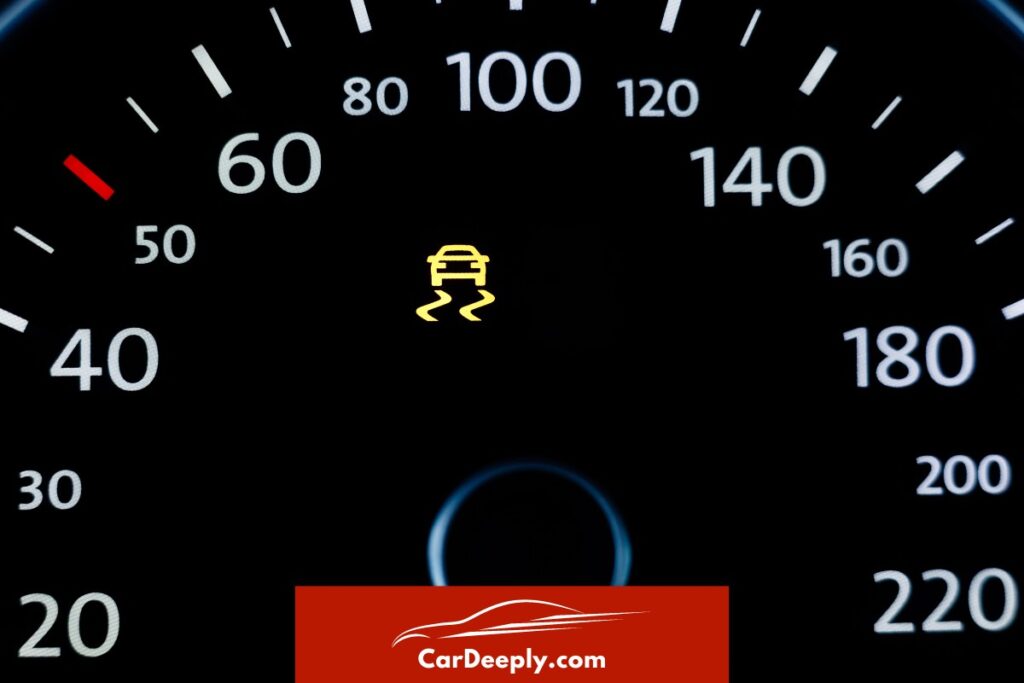The intricacies of the “how to turn off ABS light on Ford F150” can be daunting for many. But, with the proper guidance, it becomes a breeze.
Over the years, countless Ford F150 owners have grappled with this challenge, often leading to unnecessary expenses and wasted time. But you’re about to sidestep those pitfalls.
In this article, you will find a step-by-step guide on how to safely turn off the ABS light, what are the common mistakes to avoid while ensuring your safety and vehicle’s longevity, and you will find all about the expert insights on maintaining the ABS post-adjustment.
Advertising links are marked with *. We receive a small commission on sales, nothing changes for you.
Key Takeaways

- The ABS in Ford F150 prevents wheel lock-up, ensuring steerability during intense braking.
- Critical to the ABS, wheel speed sensors can malfunction due to dirt or wear.
- Low brake fluid levels or a blown ABS fuse can trigger the ABS light.
- A simple reset may resolve the ABS light issue, but the underlying causes must be addressed.
- Professional assessment and regular maintenance are vital for the ABS’s longevity and optimal performance.
Understanding the ABS Light on Ford F150
The ABS (Anti-lock Braking System) in the Ford F150 is more than just a fancy feature. It’s a critical safety component to prevent wheel lock-up during intense braking, ensuring the vehicle remains steerable.
But like all systems, it can sometimes show signs of malfunction, represented by the ABS light on your dashboard.
What the ABS Light Indicates
The ABS light is not just a bulb on your dashboard; it’s a messenger. When illuminated, it’s signaling one of several potential issues:
- Significance of the ABS in Ford F150: The ABS in the Ford F150 is designed to prevent skidding, especially during wet conditions. It allows the driver to maintain steering control, even when braking heavily.
- Difference between ABS light and brake warning light: While both lights pertain to the vehicle’s braking system, they indicate different issues. The brake warning light typically signals low brake fluid or a problem with the brake hydraulic system. In contrast, the ABS light points explicitly to a malfunction within the anti-lock braking system.
Common Causes for ABS Light Activation
Understanding the root causes of ABS light activation can save you from potential hazards and hefty repair bills:
- Wheel Speed Sensor issues: These sensors can become dirty or fail, leading to incorrect speed readings.
- ABS Module or Pump malfunctions: Over time, the ABS module or pump can wear out or malfunction, causing the ABS light to activate.
- Low Brake Fluid levels: Insufficient brake fluid can compromise the ABS’s functionality.
- Low Tire Pressure effects: Incorrect tire pressure can affect wheel speed readings, triggering the ABS light.
- ABS Fuse problems: A blown fuse can disrupt the ABS system’s power supply.
Diagnosing the ABS Light with Trouble Codes
Before diving into solutions, it’s essential to pinpoint the exact issue:
- Importance of a good code scanner: Investing in a reliable code scanner can save you time and money. It provides specific error codes related to the ABS system, guiding your repair efforts.
- Common ABS trouble codes and their meanings:
- C0035: Left front wheel speed sensor circuit malfunction.
- C0040: Right front wheel speed sensor circuit issue.
- C0045: Problem with the left rear wheel speed sensor circuit.
- C0050: Right rear wheel speed sensor circuit malfunction.
By understanding the ABS light’s intricacies, you’re better equipped to address any issues head-on, ensuring your safety and that of your Ford F150.
Addressing the ABS Light Issue on Ford F150
Once you’ve diagnosed the root cause of the ABS light activation, the next step is to address it.
This section delves deep into the practical steps to turn off the ABS light on your Ford F150, ensuring your vehicle’s safety and optimal performance.
Resetting the ABS Light
Sometimes, the ABS light might activate due to minor glitches. Before diving into extensive repairs, it’s worth trying a simple reset:
- Turn off the ignition: Ensure your vehicle is in a safe location and turn off the engine.
- Wait a few minutes: Give the vehicle’s systems time to reset.
- Restart the vehicle: Turn the ignition back on and observe if the ABS light remains illuminated.
Addressing Wheel Speed Sensor Issues
The wheel speed sensors play a pivotal role in the ABS system. If they’re the culprits:
- Inspect for visible damages: Check the sensors for any signs of physical damage or wear.
- Clean the sensors: Dirt and debris can interfere with the sensors’ readings. Use a soft cloth and appropriate cleaning solution to clean them gently.
- Consider replacement: If cleaning doesn’t resolve the issue, it might be time to replace the faulty sensors.
Checking and Refilling Brake Fluid
Low brake fluid levels can compromise the ABS system:
- Locate the brake fluid reservoir: Typically found under the hood, near the back of the engine bay.
- Check fluid levels: If the fluid is below the “MIN” mark, it needs refilling.
- Refill with appropriate brake fluid: Ensure you use the recommended brake fluid type for your Ford F150.
Evaluating the ABS Fuse
A blown ABS fuse can be the reason behind the light activation:
- Locate the fuse box: Refer to your vehicle’s manual to find the exact location.
- Identify the ABS fuse: The fuse box cover usually has a diagram indicating the purpose of each fuse.
- Replace if necessary: If the ABS fuse is blown, replace it with a new one of the same rating.
Professional Assessment and Repairs
If the above steps don’t resolve the issue:
- Seek professional help: Sometimes, the problem might be more complex than it appears. It’s advisable to consult with a certified mechanic who specializes in Ford vehicles.
- Regular maintenance: Ensure your Ford F150 undergoes regular maintenance checks to prevent future ABS light activations.
By meticulously addressing the ABS light issue on your Ford F150, you ensure your safety and prolong the vehicle’s lifespan.
Remember, while DIY solutions can be effective, there’s no substitute for professional expertise when needed.
Maintenance Tips for ABS System
- Regular Brake Fluid Checks: Emphasize the importance of checking brake fluid levels regularly and ensuring it’s free from contaminants.
- Avoiding Harsh Environments: Driving through waterlogged areas or muddy terrains can affect the wheel speed sensors. It’s essential to clean the vehicle thoroughly after such drives.
- Brake Pad Inspection: Worn-out brake pads can indirectly affect the ABS system. Regularly inspect and replace them as needed.
Frequently Asked Questions
What is the primary function of the ABS system in a Ford F150?
The ABS, or Anti-lock Braking System, in a Ford F150, is designed to prevent the wheels from locking up during intense braking situations. This ensures the vehicle remains steerable, especially in slippery conditions, reducing the risk of skidding or losing control.
How often should I inspect the wheel speed sensors?
Inspecting the wheel speed sensors during your regular vehicle maintenance checks, typically every 10,000 miles is advisable. Regular inspections can help identify and address potential issues before they escalate.
Can driving with the ABS light on damage my Ford F150?
Driving with the ABS light on won’t cause immediate damage, but it indicates that the anti-lock braking system isn’t functioning correctly. This can compromise your safety, especially in wet or icy conditions where the ABS system is crucial.
Are there any warning signs before the ABS light activates?
Yes, you might notice a longer stopping distance, unusual brake pedal behavior, or even a skidding sensation during hard braking before the ABS light illuminates, signaling potential issues with the system.
Is it expensive to fix ABS-related issues?
The cost can vary depending on the root cause. Simple fixes like resetting the light or cleaning the sensors can be inexpensive. However, replacing components like the ABS module can be costlier. Always get a professional estimate before proceeding with repairs.

Luna Meschiari is a full-blooded car nut who is well known to local garages, as each article is meticulously researched and peppered with the latest piece of information. Guess what car she’s driving right now? A RAV4 2021 Hybrid. But her heart also sleeps for pickups like the F-150. Get to know Luna better on the about us page.
Advertising links are marked with *. We receive a small commission on sales, nothing changes for you.
